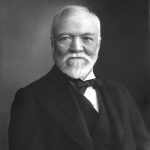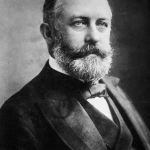
By Mark Laskow, Chair
Carnegie Hero Fund Commission
“So, you’re from Pittsburgh. What do you think about Andrew Carnegie and the Homestead Strike?”
Andrew Carnegie created and endowed about 21 organizations in North America and Europe that survive today, more than a century later. When these organizations gather to discuss mutual interests, often in New York or Edinburgh, and the work is done, the people involved usually socialize and “talk shop.” Given the nature of their business, “shop talk” usually means talking about all things Andrew Carnegie. And during that talk, someone will occasionally turn to a Pittsburgher and ask The Homestead Question. The people asking The Homestead Question have read the biographies. What they want is the “word on the street” in the ‘Burgh. The inside story.
You might wonder why Pittsburghers would even have an opinion 125 years later. Well, you might just as well ask why Carnegie organization professionals and volunteers would still be asking The Question 125 years later. But Pittsburghers do have opinions, and until fairly recently it was a topic that could generate some conversational heat. From my experience, this only faded when the collapse of the steel industry was nearly complete and the United Steel Workers had become a shadow of its former self. Until then, an article in the local paper on Carnegie philanthropy could well draw a letter to the editor recalling the Homestead Strike. This has mellowed since, but I could still take you to a bar or two where we could get an argument going over the strike. Even this will pass soon enough, as boilermakers (that’s a shot-and-a-beer for you foreigners) give way to microbrews and craft whiskey. But, hey, a nice triple IPA chasing a microbatch whiskey will prepare you to discuss The Question as quickly as the classic Iron and Imperial.


On the management side, passions are muted, discussions take place over cocktails, and the focus is less on labor-vs.-management than on Carnegie-vs.-Frick. While there are, to my knowledge, no direct descendants of either living in Pittsburgh, there are other relatives, and people here know direct descendants living elsewhere. For example, my wife is a great-great-grandniece (or something like that) of Frick’s wife, Adelaide Childs. (Some of Frick’s direct descendants carry “Childs” as a middle name.) At Christmas and Easter, my father-in-law received flowers from Frick’s daughter, Helen, until her death in 1984. On the Carnegie side, Andrew Carnegie’s great-granddaughter Linda Hills serves on the Commission and has made many friends in Pittsburgh.
My own point of view is different. I grew up in Philadelphia and moved to Pittsburgh only 46 years ago, but my mother was born and grew up in Swissvale, directly across the Monongahela River from the Homestead Works. My ancestors were working-class Polish, German, and Scots Irish. If I had been a young man among them in 1892, I might well have been working at Homestead. As it was, I began my legal career with the law firm whose founders, Philander Chase Knox and James Reed, were counselors to Carnegie and Frick during their good times and their breakup.
So we still feel the echoes of both men’s lives in Pittsburgh, especially since Carnegie and Frick both left vibrant and influential institutions here. But what about The Question itself? My answer is that Andrew Carnegie essentially invented the mass-production steel industry in the United States. It was new, and there was no established template on which he could rely. There were missteps and wrong turns, and Homestead was one of them. The unions themselves were in the same position. They had begun as craft-oriented associations of skilled workers at much smaller enterprises. They had yet to develop methods of organizing and representing both skilled artisans and less specialized industrial workers. Most of all, they had yet to shape tools to deal effectively with Carnegie-scale industrial enterprises.
The strike was devastating for the union. While it may have been a business success for the company, Andrew Carnegie does not seem to have regarded it as a personal success for him. The strike and its aftermath were certainly a factor in the breakup of his partnership with Frick, but not the only factor. There were unsustainable economic conflicts in their “Iron Clad Agreement” that were sure to cause trouble on their own.
As for the relative responsibility of Carnegie and Frick, I think it is clear they share it. Frick was undoubtedly the hands-on manager who handled the run-up to the strike with the attendant disastrous consequences. Carnegie was not hands-on, and his role in the Homestead planning was disputed between the two. But Carnegie had ultimate control and could have exercised it if he wished.
What does the Homestead Strike mean for Carnegie’s philanthropy? Far less than anyone thought, it turns out. It had been popular in some circles to dismiss his philanthropy as mere atonement for Homestead. That notion was dealt with decisively in 2006 when biographer David Nasaw revealed Carnegie’s signed prenuptial agreement with Louise Whitfield, in which he described his intention to give his fortune to charity. Carnegie signed the agreement in 1887, five years before the Homestead Strike.
Andrew Carnegie was a complicated man, and the work of his life is very much the product of his personal growth and development. He worked, learned, struggled, stumbled, and eventually triumphed, all on a scale few can imagine. Then, at the end of it all, through his philanthropy he transformed his personal triumph to public gain.
We don’t need to ignore the struggles and stumbles to appreciate the magnificence of what he made from it all.
Return to imPULSE index.
See PDF of this issue.

